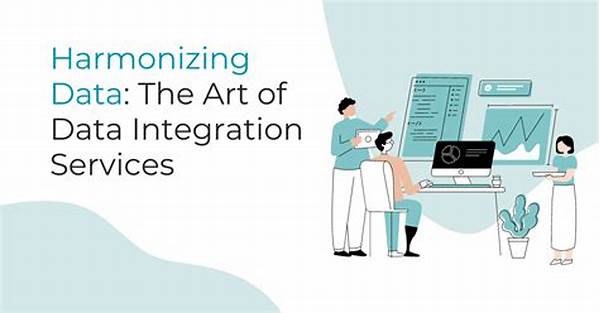Data collection is a crucial component in the field of research and analysis. The accurate gathering of information serves as the foundation upon which reliable conclusions are built. In the context of globalization and technological advancements, the methods of data collection have become increasingly diverse and complex. To address the challenges posed by such diversity and ensure data integrity, harmonizing data collection techniques has become essential. This article explores various aspects of harmonizing data collection methods, emphasizing the need for standardization, consistency, and efficiency in modern data-driven environments.
The Importance of Harmonizing Data Collection Techniques
Harmonizing data collection techniques is paramount to achieving uniformity and coherence across diverse data sources. In research and analysis, consistency in data collection methodologies enables comparability and integration of findings. By aligning techniques, researchers ensure that data from different origins and formats can be effectively combined and analyzed. This harmonization process not only reduces discrepancies and biases but also enhances the overall quality and reliability of the analysis. The ultimate aim is to facilitate better decision-making through accurate insights derived from unified data sets. Thus, as the world continues to evolve with growing complexities in data, adopting a harmonized approach is no longer just an option but a necessity.
To implement harmonizing data collection techniques effectively, it is crucial to consider a range of factors including technological tools, standard operating procedures, and training of personnel involved in data gathering processes. Such comprehensive integration ensures that the diverse types of data, whether qualitative or quantitative, are collected in a consistent and structured manner. As a result, organizations and researchers can streamline their operations, minimize data errors, and optimize resource utilization. This careful alignment of methodologies further fosters collaboration, not only within institutions but also across borders, enabling the accumulation of knowledge on a global scale.
Strategies for Effective Implementation
1. The adoption of standard protocols plays a vital role in harmonizing data collection techniques. By establishing clear guidelines, researchers can maintain consistency in their methodologies across different projects and domains.
2. Leveraging technology, such as automated data entry systems, contributes significantly to harmonizing data collection techniques. Technology aids in minimizing human error and ensuring accuracy in data capture.
3. Training and capacity-building initiatives are essential for harmonizing data collection techniques. Equipping researchers and data collectors with the required skills ensures adherence to harmonized protocols and quality standards.
4. Harmonizing data collection techniques requires fostering cross-disciplinary collaborations. Such collaborations enhance the exchange of knowledge and best practices, contributing to improved data collection strategies.
5. Implementing quality control measures is imperative in harmonizing data collection techniques. Regular audits and reviews ensure the reliability and accuracy of data collected through standardized methodologies.
Challenges in Harmonizing Data Collection Techniques
Despite its importance, harmonizing data collection techniques faces several challenges. One of the foremost hurdles is the diverse range of existing methodologies employed by various organizations and industries. Aligning these disparate methods requires considerable effort in terms of planning, negotiation, and standardization. Furthermore, differences in technological capabilities and resource availability between organizations can complicate harmonization efforts. Overcoming these challenges necessitates a concerted effort from all stakeholders involved, including researchers, policymakers, and industry leaders.
Moreover, cultural differences and language barriers represent significant obstacles to harmonizing data collection techniques, particularly in multinational research projects. These barriers can lead to misinterpretations and inconsistencies in data gathering practices. Effective communication and careful translation of standardized protocols are essential to address these issues. By fostering a collaborative atmosphere and promoting international cooperation, organizations can work towards minimizing these barriers and achieving harmonization in data collection.
Benefits of Harmonizing Data Collection Techniques
Harmonizing data collection techniques offers numerous benefits, both in terms of data quality and organizational efficiency. Standardized data collection processes result in improved data integrity and reliability, reducing the likelihood of errors and biases. This, in turn, enhances the credibility of findings and conclusions drawn from the data. Moreover, harmonization facilitates the seamless integration of data from multiple sources, enabling comprehensive analysis and informed decision-making.
Additionally, harmonizing data collection techniques can lead to cost savings by streamlining processes and reducing redundancy. Organizations can optimize resource allocation, minimizing the duplication of efforts and focusing on generating valuable insights. Furthermore, the enhanced consistency and comparability achieved through harmonization enable cross-border collaborations, fostering innovation and knowledge exchange on a global scale.
Case Studies in Harmonization
Numerous organizations across various sectors have successfully implemented harmonized data collection techniques. One notable example is the healthcare industry, where standardization of data collection methods has improved the quality of patient care. By aligning data collection protocols across hospitals and clinics, healthcare providers can ensure accurate and consistent patient records, leading to better treatment outcomes and overall efficiency. Similarly, the harmonization of data collection techniques in environmental studies has facilitated cross-border collaborations in addressing global challenges such as climate change and biodiversity conservation. These case studies highlight the tangible benefits and transformative potential of harmonizing data collection methodologies.
Conclusion on Harmonizing Data Collection Techniques
In conclusion, harmonizing data collection techniques is essential for ensuring the reliability, accuracy, and comparability of data in today’s data-driven world. By standardizing methodologies and aligning diverse data collection practices, researchers and organizations can overcome the challenges posed by data diversity and harness the full potential of information. The adoption of harmonized techniques requires a comprehensive approach, involving the consideration of various factors such as technological advancements, training, and cross-disciplinary collaboration. Despite the challenges, the benefits of harmonization are substantial, including improved data quality, organizational efficiency, and global collaboration.
Looking ahead, the continued focus on harmonizing data collection techniques will be vital in addressing the increasingly complex data landscape. As technology and globalization continue to evolve, the need for standardized and consistent data collection practices will only intensify. By embracing harmonization, researchers and organizations can unlock new opportunities and insights, empowering them to make informed decisions and drive positive change across various domains. Ultimately, harmonizing data collection techniques is not just a best practice but a necessary step towards a data-driven future.





